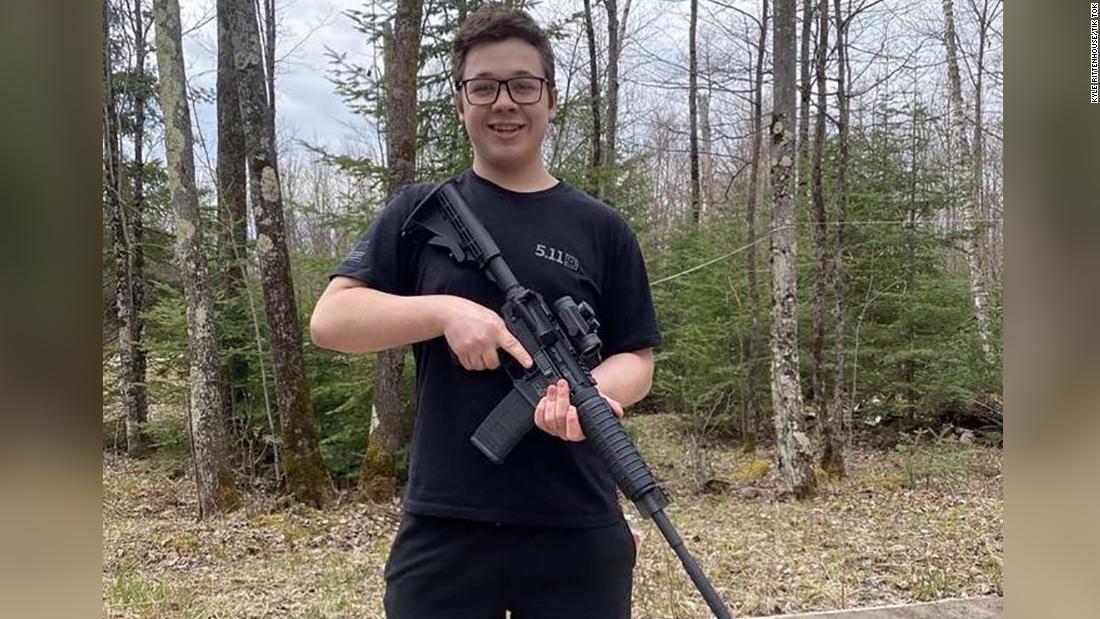Kyle Rittenhouse, an 18-year-old American charged with the killing of two protesters in Kenosha, Wisconsin in 2020 has become an issue for right-wing conservatives and has spurred an ongoing national discussion regarding gun rights, vigilantism and racial justice.
Rittenhouse made his way from Antioch, Illinois, to Kenosha to join an armed citizen patrol protecting local businesses when he later opened fire, killing two and injuring a third individual.
He was born on 3 January 2003
Kyle Rittenhouse was born in Antioch, Illinois on 3 January 2003.
He supported Donald Trump and the pro-police “Blue Lives Matter” movement, as well as taking part in a police cadet program during his teenage years.
Kyle Rittenhouse Net Worth traveled to Kenosha, Wisconsin in 2020 as part of an armed citizen group protecting local businesses during protests following the police shooting of Black man Jacob Blake.
Protests erupted following Blake’s fatal shooting by a white police officer in Kenosha.
Rittenhouse took to armed protesters with an assault rifle and went on a killing spree, shooting dead Joseph Rosenbaum and Anthony Huber while critically injuring Gaige Grosskreutz.
He is 18 years old
Rittenhouse is now 18 years old and was found not guilty in a murder trial that was held last year in Kenosha, Wisconsin. When armed with an AR-15 rifle at 17 he fatally shot Joseph Rosenbaum and Anthony Huber as well as wounding Gaige Grosskreutz during an evening of street protests.
However, prosecutors in Rittenhouse’s trial have struggled to convince jurors that Rittenhouse fired his weapons in self-defense. To do so legally requires them to establish that someone was imminently threatened with death or serious injury from Rittenhouse’s shootings.
Demonstrating that Rosenbaum posed an imminent threat has been a difficult hurdle for lawyers; they have attempted to persuade a jury that Rosenbaum was indeed an imminent danger on that night.
He is a member of the Blue Lives Matter movement
The Blue Lives Matter movement was launched by law enforcement as an anti-Black Lives Matter response in 2014 in response to criticism about police action during Michael Brown and Eric Garner deaths. It seeks to justify police violence by portraying black men as true perpetrators.
The phrase, “Blue Lives Matter,” is an exaggeration of reality and serves to undermine claims for racial equality, suggesting that respecting black lives requires qualification or compromise.
Due to this rhetorical strategy, “war on police” has become a rallying cry for those offended by suggestions that police be held accountable for killing unarmed black people. Unfortunately, such rhetoric implies a nationwide conflict against black people by predominantly Black aggressors – and therefore makes police vulnerable as a defense force against aggression from black militants.
Kyle Rittenhouse’s 18-year-old white man who shot three men dead during protests in Kenosha, Wisconsin has caused widespread outrage and anxiety – as it recalls similar cases like Darren Wilson and Philando Castile shootings. His trial is also likely to create ripples throughout society at large.
He was acquitted of all charges
Kyle Rittenhouse was charged with shooting two men during a protest in Kenosha last summer; on Friday his charges were all dismissed by a Wisconsin court, marking an end to an emotionally charged legal saga which pitted racial justice, Second Amendment rights and vigilantism against each other.
Defense attorney Mark Richards suggested that Rittenhouse came from Antioch, Illinois, specifically to Kenosha to protect his family and friends from rioters. Rittenhouse testified he had also been helping clean graffiti from high schools prior to the shootings.
At trial, Assistant District Attorney Thomas Binger used evidence from witnesses showing Rittenhouse wheeling around and firing his rifle while Joseph Rosenbaum pursued him to convince jurors he was an active shooter who threatened people with his weapon. They relied heavily on footage captured from bystanders that showed Rittenhouse threatening people with his gun.
Wisconsin law establishes that deadly force may only be used as necessary to prevent imminent death or great bodily harm, so the jury must assess whether Rittenhouse genuinely believed himself to be in imminent danger and whether his perception was objectively reasonable given his circumstances.
